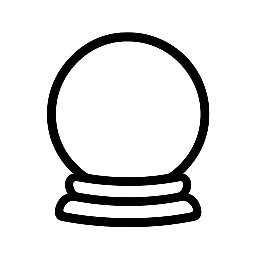The third eye, also known as the ajna chakra, is a powerful energy center located between the eyebrows. It is believed to be the seat of intuition, insight, and higher states of consciousness. Activating the third eye can have a profound impact on one’s life, allowing individuals to tap into the source of their inner wisdom, connect with their higher self, and experience a deeper sense of purpose and meaning.
What is Third Eye Activation?
Third eye activation is the process of awakening and balancing the energy of the ajna chakra. This can be achieved through various techniques, including meditation, yoga, and other spiritual practices. When the third eye is activated, it is believed to open up a doorway to higher states of consciousness, allowing individuals to access information, guidance, and wisdom that is not available to the rational mind.
Benefits of Third Eye Activation
The benefits of third eye activation are numerous and can have a profound impact on one’s life. Some of the benefits include:
- Increased intuition and insight: Activating the third eye can help individuals develop their intuition and gain insights into their life, allowing them to make more informed decisions and navigate challenges with greater ease.
- Improved psychic abilities: The third eye is associated with psychic abilities such as clairvoyance, clairaudience, and clairsentience. Activating the third eye can help individuals develop these abilities and connect with the spiritual realm.
- Enhanced creativity and imagination: The third eye is also associated with creativity and imagination. Activating the third eye can help individuals tap into their creative potential and bring new ideas and inspiration into their life.
- Greater sense of purpose and meaning: Activating the third eye can help individuals connect with their higher self and gain a deeper understanding of their life’s purpose and meaning. This can lead to a greater sense of direction, motivation, and fulfillment.
Techniques for Third Eye Activation
There are several techniques that can be used to activate the third eye, including:
- Meditation: Meditation is a powerful tool for activating the third eye. By focusing the mind and quieting the thoughts, individuals can create a sense of inner peace and calm that allows the third eye to open and expand.
- Yoga: Certain yoga practices, such as Kundalini yoga, can help activate the third eye by awakening the energy of the ajna chakra.
- Visualization: Visualization techniques, such as imagining a bright light or a lotus flower at the third eye point, can help stimulate the energy of the ajna chakra and activate the third eye.
- Sound healing: Certain sound frequencies, such as the sound of the om mantra, can help activate the third eye and balance the energy of the ajna chakra.
Contraindications and Precautions
While third eye activation can be a powerful tool for personal growth and transformation, it is not without its risks. Some individuals may experience negative side effects, such as:
- Increased sensitivity: Activating the third eye can make individuals more sensitive to their environment and the energy of those around them.
- Emotional turmoil: As the third eye opens, individuals may experience a release of pent-up emotions and energies that can be challenging to navigate.
- Disorientation and confusion: The expanded awareness and perception that comes with third eye activation can be disorienting and confusing, especially for those who are not prepared.
It is essential to approach third eye activation with caution and respect, and to seek guidance from a qualified teacher or practitioner if necessary.
Conclusion
Third eye activation can be a powerful tool for transforming one’s life and tapping into the source of inner wisdom and guidance. By using techniques such as meditation, yoga, and visualization, individuals can awaken the energy of the ajna chakra and experience a deeper sense of purpose, meaning, and connection to the spiritual realm. However, it is essential to approach this practice with caution and respect, and to seek guidance from a qualified teacher or practitioner if necessary.


Leave a Reply